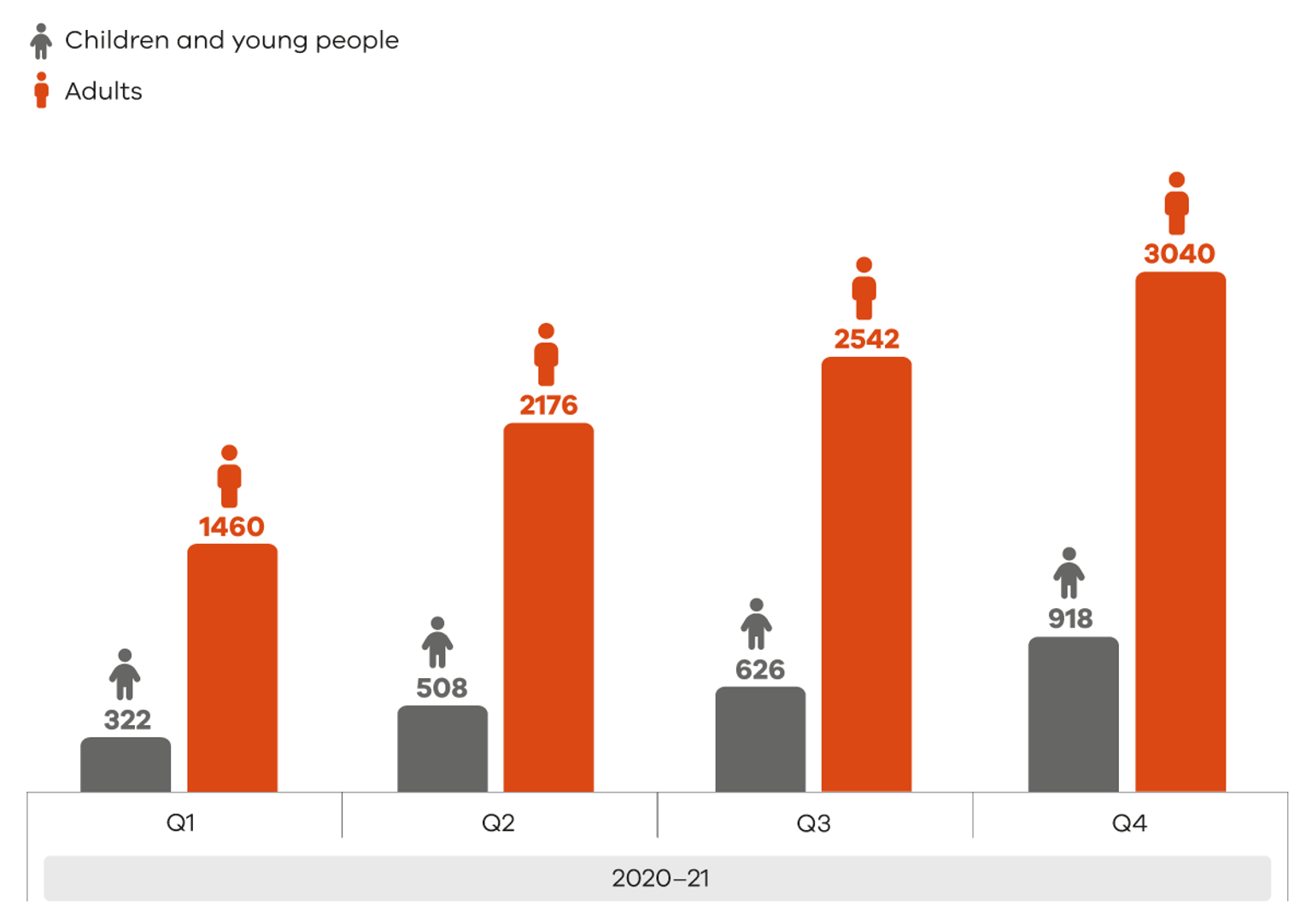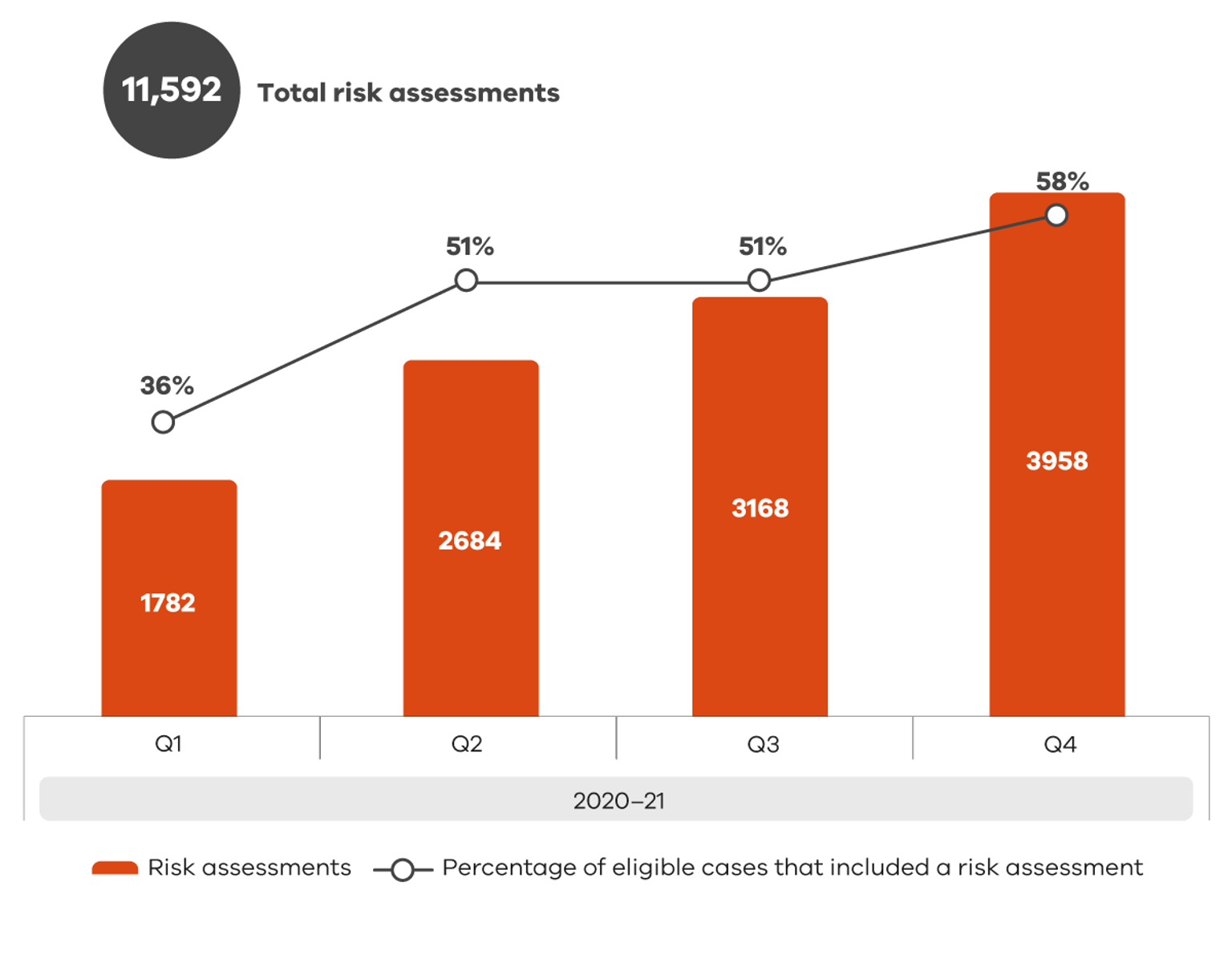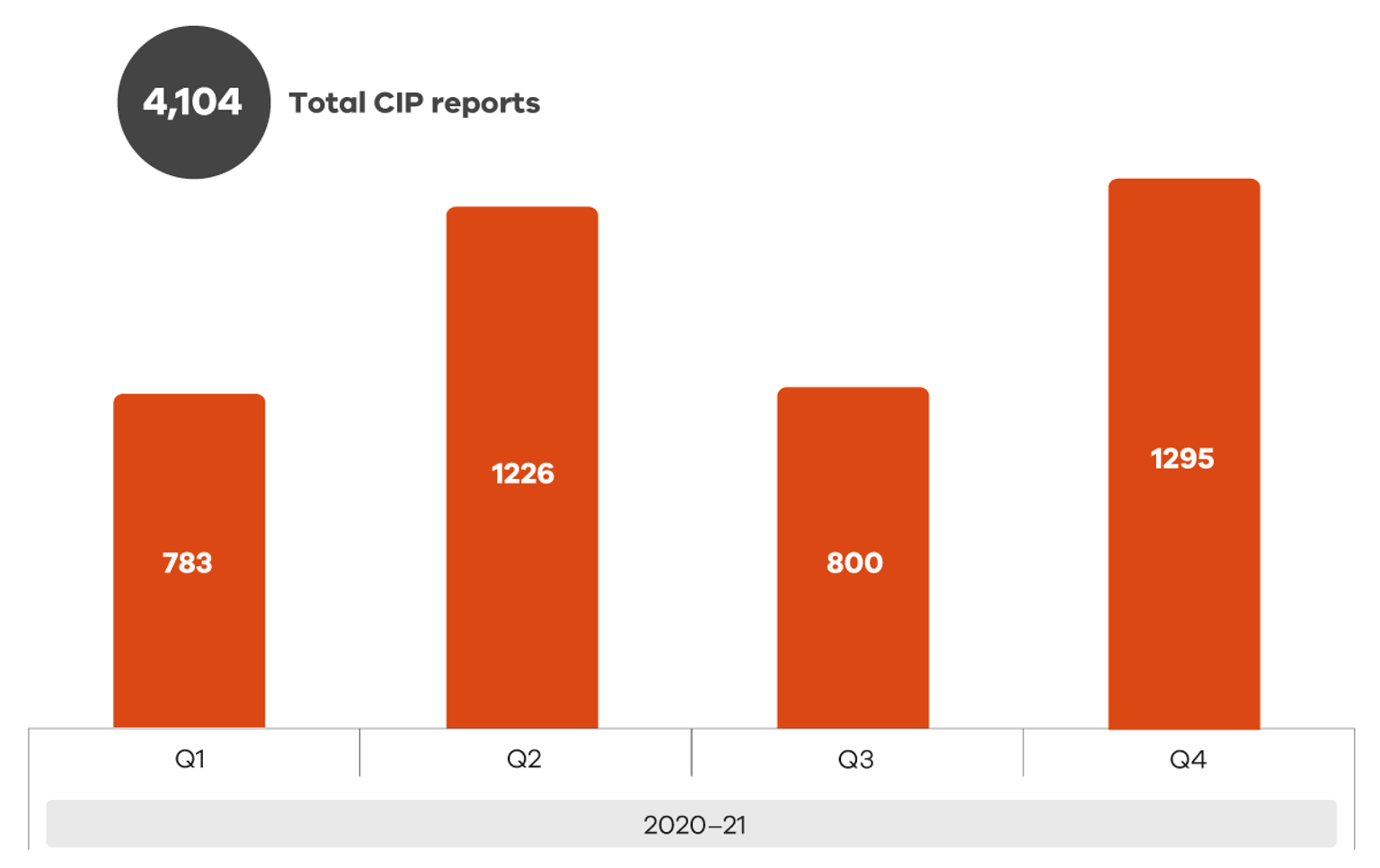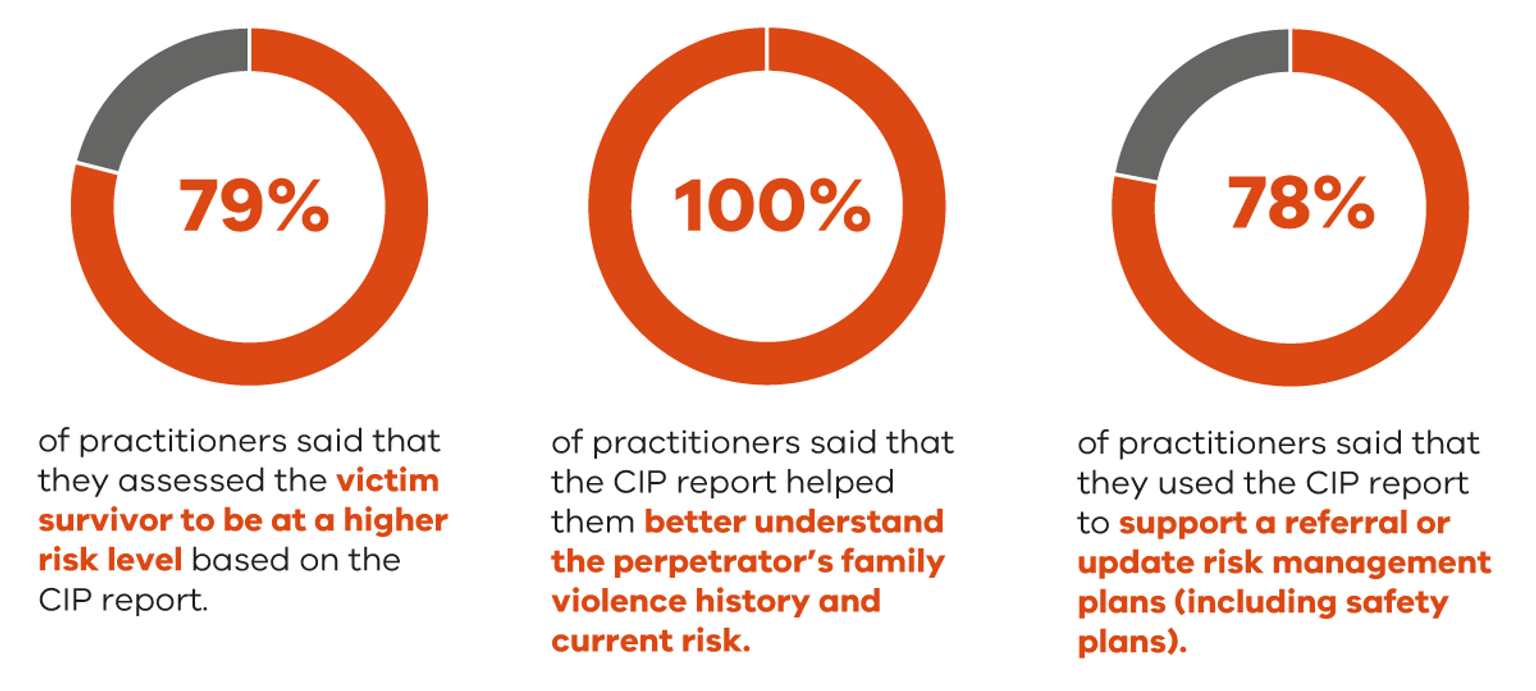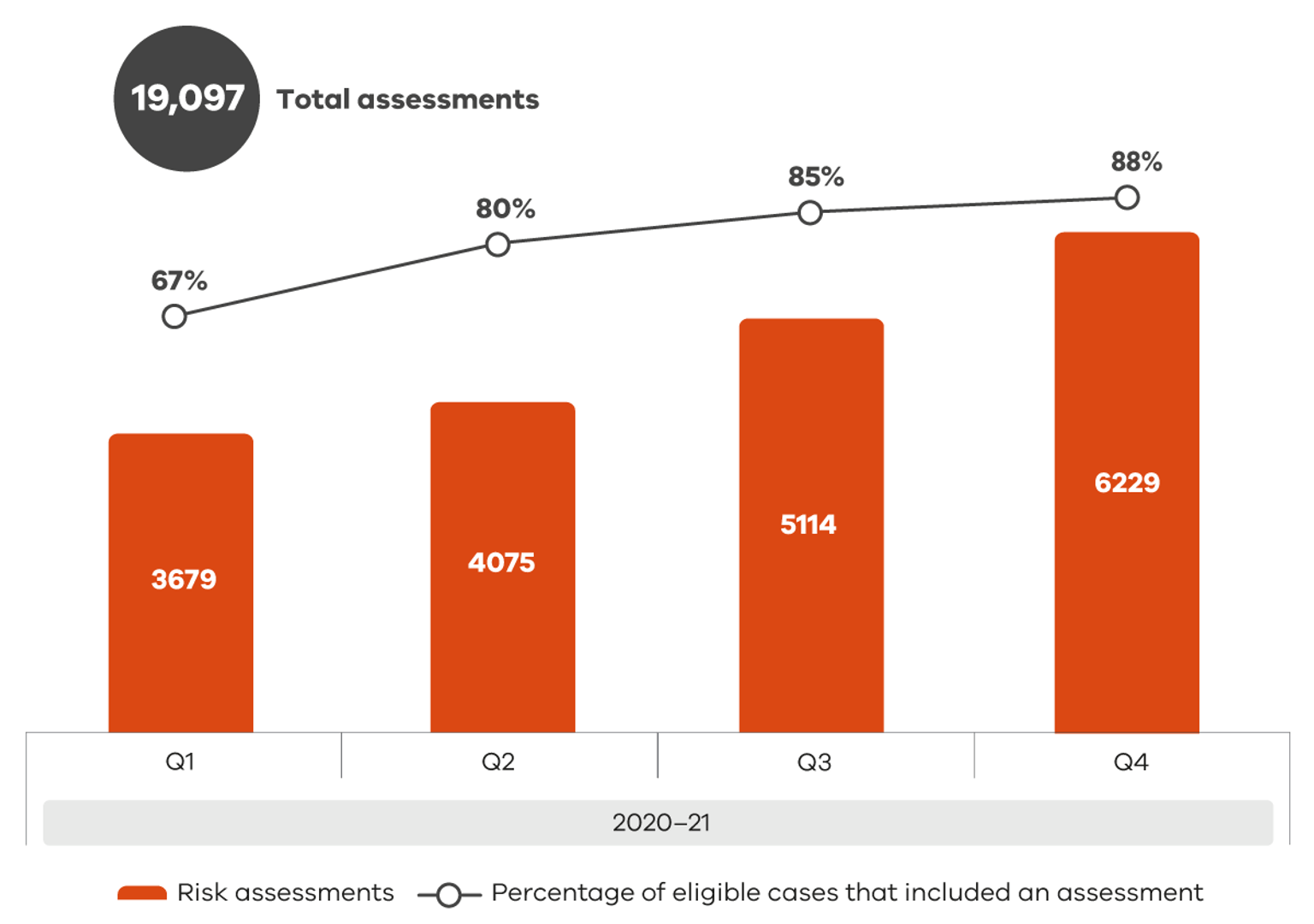How is The Orange Door network working with people to identify risk and prioritise their needs?
Practitioners at The Orange Door network are supported to do their work by changes to information sharing legislation, an improved family violence risk assessment and management framework, the Central Information Point and working within interdisciplinary teams. The Orange Door network takes a holistic approach to working with families by identifying service responses based on risk and need, including family violence, and safety and support of children and young people. In the process of supporting a family, children and young people are treated as individuals and as victims in their own right if they have experienced family violence.
Once a referral is received, priority and urgency of response is determined through the screening, intake and triage (SIT) process where an initial assessment is undertaken based on the information in the referral, the referral history at The Orange Door and any past engagement with partner agencies. The referral will then move onto the assessment and planning stage where the practitioners will engage with the individual/family to assess the key risks and needs of each individual and to identify their goals and preferences in the context of their family and community.
The Orange Door also works closely with Risk Assessment and Management Panels (RAMPs) to ensure that high risk situations are managed in the best possible way. RAMPs are responsible for developing and implementing multi-agency action plans for individual high risk cases to lessen or prevent serious threats to woman and children and young people and to increase perpetrator accountability. RAMPs receive referrals from services which are working with women or families where there are concerns that there is a high risk of harm that is not adequately mitigated by the current range of interventions. There are 18 RAMPs operating across Victoria.
Assessing risk where family violence is present
Practitioners within The Orange Door network assess the family violence risk that perpetrators pose for victim survivors. Practitioners work across specialisations to ensure there is an interdisciplinary response to address identified risk and needs and develop appropriate safety planning. The process of assessing family risk is ongoing throughout the time that The Orange Door network works with a client.
The Family Violence Multi-Agency Risk Assessment and Management (MARAM) Framework supports professionals to effectively identify, assess and manage family violence risk. The MARAM Framework, together with the Family Violence Information Sharing Scheme (FVISS), strengthen system-wide family violence risk assessment and management, and facilitate better sharing of risk-relevant information between services to help keep people safe and keep perpetrators in view. In addition, the Child Information Sharing Scheme (CISS), supports professionals to share information to promote the safety and wellbeing of children and young people (child safety and wellbeing assessment is explored in a separate section below).
In 2020-21 practitioners undertook 11,592 risk assessments[1]. Of these, 9,218 were undertaken for adults (increasing from 1,460 in Q1 to 3,040 in Q4) and 2,374 were undertaken for children and young people (increasing from 322 in Q1 to 918 in Q4) (Figure 8). The number of assessments undertaken by practitioners was 72.6% higher compared to 2019-20, with risk assessments undertaken for adults accounting for most of the increase. While the increase in the number of risk assessments is mostly due to the commencement of the three new Orange Door areas in 2020-21, the pre-existing Orange Door areas also showed signs of improvement with an increase of 30.0%.
The number of risk assessments undertaken in 2020-21 was lower than the number of people who were provided with a response. This reflects that The Orange Door network is sometimes unable to make contact with the person referred (27.6%), or when they do, the person chooses not to take up the offer of a service or support (17.0%). These proportions include referrals for perpetrators of violence who more frequently do not respond to attempts to contact or decline the offer of services. In a small number of cases, a decision may be made not to make contact with a perpetrator as it would significantly increase risk for a victim-survivor. Further, the online system of Tools for Risk Assessment and Management (TRAM) which is used for recording and reporting MARAM-aligned risk assessments, has introduced a significant shift in risk assessment practice (including in relation to the individual assessment of children and young people) with uptake of the system occurring gradually over time.
Despite the above factors, 2020-21 percentage of eligible cases that included a risk assessment as part of the response increased from 36.0% in Q1 (similar level to 2019-20 as a whole) to 57.8% in Q4 (Figure 9).[2] This suggests that the practice of formally undertaking and recording family violence risk assessments in TRAM is progressively improving across The Orange Door network. Nonetheless, this continues to be an area for further improvement and development in The Orange Door network.
Safety planning
For people experiencing family violence, safety planning is a key part of risk management that is undertaken by The Orange Door network as an immediate support intervention. It typically involves a plan developed by a practitioner with the victim survivor to help manage their own safety in the short to medium term.
In 2020-21, practitioners in The Orange Door network recorded 8,740 safety plans in the CRM to help keep victims of family violence safe, a 43.3% increase from 2019-20. While the increase is largely due to the opening of new Orange Door areas, existing Orange Doors observed a sizable increase (25.8%) in the number of safety plans as well. This may be a result of an initiative undertaken in 2020-21 to improve the number of recorded safety plans being completed across The Orange Door network.
Central Information Point
The Central Information Point (CIP) commenced in 2018 and is a unique initiative that helps to keep perpetrators in view. The CIP consolidates critical information relevant to family violence risk from Victoria Police, Corrections Victoria, the Magistrates’ Court of Victoria, and the Department of Families, Fairness and Housing (DFFH). Information from these sources about a perpetrator or alleged perpetrator of family violence is consolidated into a single report for The Orange Door network practitioners to assist with family violence risk assessment and management.
In 2020-21 a total of 4,104 CIP reports were provided to practitioners in The Orange Door network (Figure 10). CIP reports provided to practitioners in 2020-21 increased by 24.9% from 2019-20.
The rollout of the CIP to RAMPs
In October 2020, the CIP was made available to the first set of RAMP areas as part of a phased rollout[3]. The rollout schedule will have all RAMP areas onboarded to access the CIP by June 2022. RAMP access to the CIP is part of the Royal Commission into Family Violence recommendation to establish the CIP (Recommendation 7). Several RAMP areas were given access to the CIP in 2020-21, specifically Brimbank Melton, Hume Moreland, Western Melbourne, Outer Eastern Melbourne and Ovens Murray.
A survey of practitioners in The Orange Door undertaken in July 2021 demonstrates the value that the CIP provides practitioners and victim survivors in terms of risk assessment and management. In that survey, 100 per cent of practitioners agreed that a CIP report helped them better understand the perpetrator’s family violence history and current risk they pose, and 79 per cent of practitioners said they assessed the victim survivor to be at a higher risk level based on a CIP report (see Figure 11).
Jane’s story: CIP report supports assessment and management of risk
The Orange Door and CIP in collaboration with RAMPs in each local area play a critical role in improving system coordination and the sharing of risk relevant perpetrator information to help keep perpetrators in view.
A RAMPs Co-ordinator was asked to case consult by a specialist family violence service. Kim and Rob have a baby called Jane. Rob was engaged with The Orange Door network due to family violence and other offences. Child Protection were involved with the family and were planning contact between Jane and Rob. Several agencies involved with the family raised concerns about this contact and the safety of Jane.
The RAMP Co-ordinator submitted a CIP request. The CIP report showed a timeline of offences involving Rob’s child from a previous relationship as well as offences involving young people not related to them. The CIP report also demonstrated there had been limited system accountability around his use of family violence with past victim survivors and the harm he had caused to very young girls through sexual exploitation. Agencies are now advocating for supports and conditions to be put in place for Rob regarding any access to Jane. The information from the CIP report will be used in this advocacy to assess and manage the risk to Jane as a victim survivor of family violence and to Kim.
*Not their real names
Identifying risk and need for children and young people
The Orange Door network practitioners undertake assessments for infants, children and young people where there are concerns for the safety, wellbeing, or development of a child, including when they have been impacted by family violence. There is a strong focus on working with families to develop a thorough understanding of child safety and wellbeing concerns in accordance with the Best Interests Case Practice Model. Community Based Senior Child Protection Practitioners support this process by providing access to information about current or previous assessments and interventions by Child Protection. The MARAM assessment tools and practice guidance provide additional detail on the MARAM framework to support practitioners identify, assess and manage family violence risk, including to children and young people as victim survivors in their own right. Data relating to family violence risk assessment for children is referred to above.
In 2020-21, practitioners undertook 19,097 child safety, wellbeing and other assessments.[4] Throughout the year, there was a significant increase in risk assessments from 3,679 in Q1 to 6,229 in Q4. As above with family violence risk assessments, the increase in the number of child safety, wellbeing and other assessments is mostly due to the commencement of the three new Orange Door areas in 2020-21, but there was also an improvement in application of these assessments across The Orange Door network as a whole.
In 2020-21, the percentage of eligible cases that included a child safety, wellbeing or other assessment as part of the response increased from 66.8% in Q1 (similar level to 2019-20 as a whole) to 88.1% in Q4 (Figure 12).[5] This suggests that the practice of undertaking and recording child safety, wellbeing and other assessments is improving across The Orange Door network.
Notes
[1] The number of risk assessments reported in Budget Paper 3 reporting for 2020-21 was 11,711. This variation is due to point in time data extraction within a dynamic CRM system.
[2] Eligible cases are those with a case closure reason where we would expect a family violence risk assessment to have been completed – for example, where the client role was predominately a family violence related one (i.e. victim survivor adult/child and perpetrator) and where the client’s needs were met by The Orange Door (as opposed to someone who was non-responsive when contacted by The Orange Door).
[3] A Risk Assessment and Management Panel (RAMP) is a formally convened meeting, held at a local level, of nine key agencies and organisations that contribute to the safety of women and children and young people experiencing serious risk from family violence. Across Victoria, there are 18 RAMPs that each meet once a month to share information and take action to keep women and children and young people at the highest risk from family violence safe.
[4] The number of child safety, wellbeing and needs assessments reported in Budget Paper 3 reporting for 2020-21 was 19,250. This variation is due to point in time data extraction within a dynamic CRM system.
[5] Eligible cases are those where the client role was predominately child wellbeing-related (i.e. affected adult/child or other individual).
Updated
